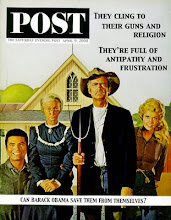
One night I explored an unknown place. I sensed the different hues of red in the towering walls, the scant trickle of water through eroded channels, the cries of hawks, ages-old campsites out of the elements, greyed and twisted wood, dust-laden sagebrush and dried grasses, and ankle-wearing rocks.
Most dreams vanish once morning light hits. This dream stuck. It was a real place. I just lacked physical evidence.
Nearly two years later I visited relatives in Guymon, Okla. One morning I decided to take a day trip south into the Texas Panhandle to visit Amarillo and the Panhandle-Plains Museum in Canyon. After buying some pre-Clinton-Biden-Brady-ban AR-15 magazines at a gun show in Amarillo's Civic Center and consuming a tolerable, but not Kansas-quality, steak, I visited "Texas' Largest History Museum" on the West Texas A&M University campus. With more than 3 million artifacts, some also call it the state's Smithsonian Institution.
After two hours, I had seen only a speck of the place. Part of the museum was off-limits because of remodeling work. Some of the main exhibits featured Palo Duro Canyon, 12 miles east of Canyon.

Amarillo and Canyon sit atop what Francisco Coronado named the Llano Estacado, a mesa larger than all of New England, in 1541. Like much of of the plains, even yet referred to as the Great American Desert, the Llano Estacado looks flatter than unleavened bread. At least until one looks closer. Widening and deepening cracks proved the first theory wrong as I drove east. Eventually the cracks grew so wide the highway could not skirt them. The road relented to the variformed, segmented depths of Palo Duro Canyon.
Just that initial drop from caprock reminded me of Georgia O'Keeffe's description of the canyon captured in a display of her work at the museum. "It is a burning, seething cauldron, filled with dramatic light and color."
As I spent the rest of the light experiencing an iota of the 120-mile-long rift, I knew the place from my dream is somewhere along the Texas Panhandle's Caprock Escarpment. If it can't be found in Palo Duro Canyon, once home to the Comanche and Charles Goodnight's JA Ranch, there are the Tule and Caprock Canyons.

I suspect I'll go back if only in a dream.

1 comment:
Beautiful post. Makes me long to be a bird on a current that sails on that landscape.
Post a Comment